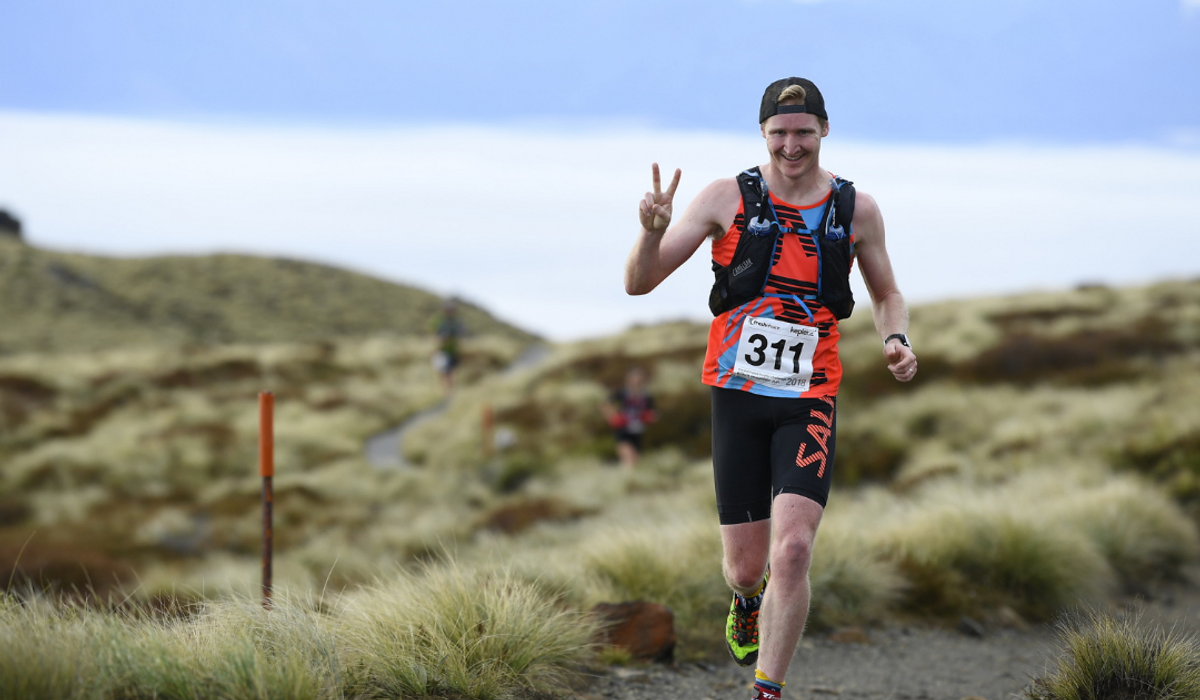At the end of 2016, I ran the inaugural Taupo Ultramarathon 100km event along the stunning Great Lake Trail which runs from the western to the eastern side of Lake Taupo, New Zealand. This was to be my first ultramarathon and being a sports scientist I wanted to get as much data as possible. To start off, I put on a “Stryd” running power meter and did a few tests in the lab a couple of weeks before the race. Based on my data I made it my goal to run under 10hrs (under 6min/km).
How did I come up with under 10hrs?
I know from testing myself in the lab that when I’m running 6min/km it’s equivalent to 230 Watts with an oxygen utilisation rate of 35mL/min/Kg which correlates to 45-50% of my VO2max (72mL/min/Kg). At 40-50% of VO2max my respiratory exchange ratio (RER) is 0.80. Your RER indicates what proportion of fat and carbohydrate you’re burning. An RER = 0.80 is equivalent to 40% CHO and 60% Fat. In metabolic efficiency terms, this is not amazing but pretty good. If I wanted to burn more fat I could limit my carbohydrate intake during training but for me this ratio works and is sustainable. I also knew I’d be implementing a glycogen supercompensation protocol leading into the race which would give a little boost in fat burning (read about that here). At an RER of 0.8 I’d be burning 800 kcal/hr or more specifically 90g/hr carbohydrate and 42g/hr fat. Using those numbers and doing the calculations I knew I could throw a ballpark figure of 10hrs out there as a goal.
Effort, Heart Rate, Pace, Power?
My secondary goal was to evenly pace myself using feedback from my perceived effort, heart rate and pace while only keeping an eye on my power. Being reasonably new to power, I didn’t want to put all my eggs in that basket just yet. Each of these metrics is effective at different times during an ultra-endurance event. At the beginning perceived effort can be low despite a high pace or high heart rate and the opposite can occur near the end of the race when you’re in a world of pain and struggling to move. Power can be useful throughout the race because it allows you to objectively assess your physiological effort regardless of how you are feeling.
Rookie Error
As you can see from my power (yellow) and heart rate (purple) data, my pacing strategy fell into the fatal trap of going out too hard and dying at the end. The key segments to draw from this graph are the first 50km and the middle 50km (25 – 75km) and the final 50km.
Total 100km = 10hrs 36min, 217W, 155bpm, 6:22min/km
First 50km = 4hrs 50min, 233W, 159Bpm, 5:48min/km
Middle 50km (25-75km) = 5hrs 7min, 226W, 163bpm, 6:12min/km
Second 50km = 5hrs 46min, 206W, 153Bpm, 6:55min/km
Looking solely at the time and average heart rate, pace and power the data would suggest I wasn’t too far off what I planned to do. But if we look more closely at each 50km segment you can see I was either going too fast or too slow.
Side Note* I did think my heart rate was too high during the first part of the race but my pace was good and so was my power so I didn’t worry about it.
Know Your Data Before You Rely on it
I fell into two very common traps when I was looking at pace and power.
- Pace is affected by GPS signal and,
- power is affected by your weight.
In reference to both of these, I was running along a rocky coast that plays havoc with GPS which made it look like I was running slower than I was. As a result, I was trying to speed up when I was already running fast enough. Secondly, I was wearing a Camelbak which added 2-3kg to my weight meaning I was pushing more power than my power meter suggested. To combat these two inaccuracies I should have paid more attention to heart rate (which I didn’t). Looking at the middle 50km (25-75km), I was running at approximately the “right pace” but you can see from my heart rate I was pushing too hard due to the undulating nature of the course. That is where power would have been the helpful metric since it allows you to account for uphills unlike pace; For example, if you can run 5min/km on the flat at 250 watts and you try to run uphill at 5min/km you might be at 400 watts. Therefore, if you run uphill at 250 Watts you know that’s an equivalent effort to 5min/km on the flat. The final 50km is very interesting because it really shows you my struggle. Despite running over 1min/km slower my heart rate and power weren’t much lower than my first 50km. This is a result of the extreme amounts of fatigue my body was experiencing at the time causing a massive deterioration of my running form. Hence I was doing just as much work (power) and putting in just as much effort (heart rate) but I was running far slower (pace)
What did I learn?
- Even on a perfect day I probably couldn’t have run under 10hrs.
- Understand the data your watch gives you.
- Update your weight on your running power meter if you’re going to be carrying added water and gear.
- Even at the best of times, GPS data is ± 2% and this can be more like ±4% on the trails.
- Running power is an extremely useful tool for pacing.
- Running 100km hurts!
https://youtu.be/VjkHDFVHFEQ


Leave a Reply